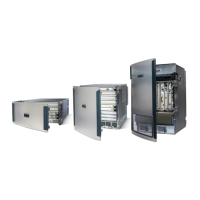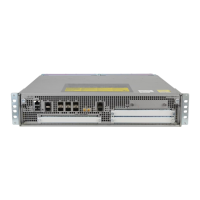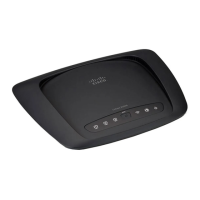1-7
Cisco IOS XR Getting Started Guide for the Cisco XR 12000 Series Router
OL-24755-01
Chapter 1 Introduction to Cisco IOS XR Software
Router Management Interfaces
• QoS—Comprehensive QoS support with up to 3 million queues, Class-Based Weighted Fair
Queuing (CBWFQ) based on a three-parameter scheduler, Weighted Random Early Detection
(WRED), two-level strict priority scheduling with priority propagation, and 2-rate, 3-color (2R3C)
Policing are all supported.
• Cisco IOS XR Software—This software supports a rich variety of QoS mechanisms, including
policing, marking, queuing, dropping, and shaping. In addition, the operating systems support
Modular QoS CLI (MQC). Modular CLI is used to configure various QoS features on various Cisco
platforms.
• H-QoS—Is supported on Ethernet interfaces. For EVCs four-level H-QoS support is provided with
the following hierarchy levels: port, group of EFPs, EFP, and class of service. This level of support
allows for per-service and per-end user QoS granularity. Four-level H-QoS support is provided for
EVCs with the following hierarchy levels: port, group of EFPs, EFP, and class of service. This level
of support allows for per-service and per-end user QoS granularity. H-QOS support is also provided
on SIP based interfaces.
MPLS TE
The router supports MPLE Traffic Engineering (TE), which offers the following:
• MPLS TE—Cisco IOS XR Software supports MPLS protocols such as Traffic Engineering/Fast
Reroute (TE-FRR), Resource Reservation Protocol (RSVP), Label Distribution Protocol (LDP), and
Targeted Label Distribution Protocol (T-LDP).
• MPLS TE Preferred Path—Preferred tunnel path functions let you map pseudowires to specific TE
tunnels. Attachment circuits are cross-connected to specific MPLS TE tunnel interfaces instead of
remote provider-edge router IP addresses (reachable using IGP or LDP).
• Ignore Intermediate System-to-Intermediate System (IS-IS) Overload Bit Avoidance—This feature
allows network administrators to prevent a RSVP-TE Label Switched Path (LSP) from being
disabled when a router in that path has its Intermediate System-to-Intermediate System (IS-IS)
overload bit set. For more information on IS-IS overload bit aviodance, see the Cisco IOS XR MPLS
Configuration Guide for the Cisco XR 12000 Series Router.
Router Management Interfaces
Because new routers are not yet configured for your environment, you must begin the configuration
using the command-line interface (CLI). This guide provides instructions on using the CLI to configure
basic router features. Cisco IOS XR software supports the following router management interfaces,
which are described in the following sections:
• Command-Line Interface, page 1-7
• Extensible Markup Language API, page 1-8
• Simple Network Management Protocol, page 1-8
Command-Line Interface
The CLI is the primary user interface for configuring, monitoring, and maintaining routers that run
Cisco IOS XR software. The CLI allows you to directly and simply execute Cisco IOS XR commands.

